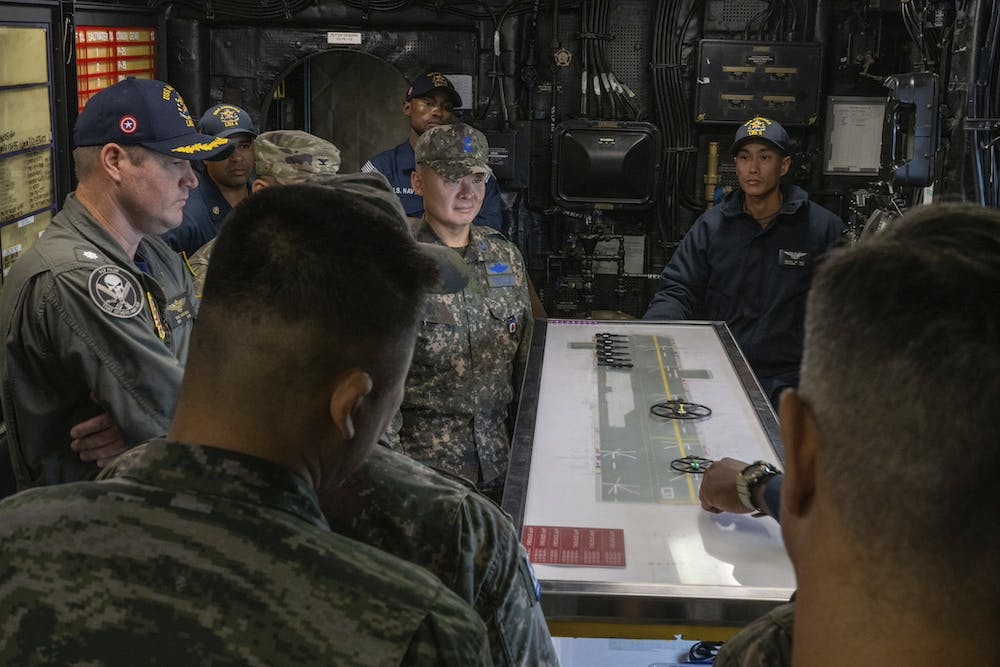DISA Eyes Growth in Private, Commercial Cloud Programs
Agency leaders anticipate more sites joining its private and commercial cloud solution programs to support military units globally.

DISA rolled out its new Joint Operational Edge (JOE) commercial cloud capability to sites in Japan and Germany as agency leaders aim to add additional sites soon.
JOE Product Owner Matt Quinn and Cloud User Experience Chief Adam Ringel briefed attendees at the AFCEA TechNet Indo-Pacific conference in Honolulu about their vision for cloud services in the region and next steps for these programs.
JOE is part of DISA’s OCONUS Cloud it launched last year and provides compute offerings that could be ordered under the Defense Department’s Joint Warfighting Cloud Capability (JWCC) vehicle.
The choice between JOE and Stratus, Quinn and Ringel said, is a matter of maturity. Going for private cloud offering Stratus offers a safer entry point for entities just getting started with cloud and can use it as a stepping stone to scalability that you’d find with JOE’s commercial providers. Both are also complementary in a hybrid-cloud environment.
The agency has been executing a massive plan to bring cloud capabilities to the military services and combatant commands globally with programs like JOE and also Stratus. Its plan, called DISA Next, outlines the agency’s goals for the next 10 years — cloud modernization being one of them.
“We must develop a fully functional DOD enterprise cloud environment. That means we must provide both an active and self-managed cloud space. We must enable secure cloud access and provide relevant tools DOD customers need to fully realize cloud capabilities,” DISA Director Lt. Gen. Robert Skinner wrote in the May document.
This was followed by DOD CIO’s Fulcrum strategy, a roadmap guiding defense components‘ information technology activity and investments.
“We’re really at a tipping point right now where there’s all this great technology that’s out there that we’re leveraging,” said Robert Franzen, deputy customer experience officer at the DOD CIO office, in a June interview about the strategy. “Fulcrum is the nexus so that it bridges the gap between [defense] strategies and technology.”
Quinn and Ringel said they have seen excitement around the new cloud offerings even among early adopters and hope to expand their footprint. This includes diversifying its vendors, which “Fulcrum positions us for,” they said. “The future needs to be this joint environment from which everyone can build.”
The agency is planning to run a joint exercise for Stratus in early April and then larger joint exercises in August.
This is a carousel with manually rotating slides. Use Next and Previous buttons to navigate or jump to a slide with the slide dots
-

Marine Corps Operation StormBreaker Slashes Software Delivery Timelines by 17x
New program aims to deliver critical digital capabilities to warfighters at the "speed of relevance" by overhauling traditional processes.
4m read -

Modernization Strategies to Enable Energy Innovation
Lawrence Berkeley National Lab and Maximus experts explore the modernization strategies driving digital transformation and operational resilience within the energy sector.
33m watch -

DOE National Labs Launch New AI Tools for Operational Efficiency
The Energy Department's National Laboratories are using AI to increase operational efficiency and drive research efforts forward.
3m read -

Software Factories Accelerate Federal Modernization Outcomes
IT leaders from Nutanix and SAIC explain how software factories streamline tech development, modernize legacy systems and accelerate adoption of emerging technologies like AI.
34m watch -

AI in Top-Secret Clouds Is a ‘Game Changer’ for IC, DNI Says
Tulsi Gabbard touts significant improvements in AI, data analysis, interoperability and operational intelligence at the AWS Summit 2025.
3m read -

AWS Summit: Forging Successful Cloud Modernization Partnerships
Industry leaders share insights on the critical role industry partnerships have in enabling government agencies to navigate procurement challenges for cloud and zero trust solutions.
24m watch Partner Content -

Air Force, Coast Guard Talk Data Security Efforts for AI Development
The services' AI initiatives include efforts like creating clean training data, countering data poisoning and bridging siloed teams.
4m read -

Federal Agencies Tout Tech in President Trump’s First 100 Days
Defense modernization and health care restructuring landed among some of the key IT highlights within the president's first few months.
6m read -

Disruptive Technologies Charge Next Wave of Federal IT Modernization
Legacy system modernization requires the right tools for seamless migration.
8m watch Partner Content -

Retired Air Force Intelligence CIO: ‘Software Is Everything' to Modern Infrastructure
Modernizing defense infrastructure means breaking away from aging legacy systems toward scalable platforms.
5m watch -

How Federal Agencies Can Overcome Barriers to Tech Adoption
AI is reshaping the federal landscape, offering agencies a way to boost operational and cost efficiency and augment the workforce. However, speedy adoption remains a challenge.
8m watch Partner Content -

Modernizing Maritime Medicine on USNS Mercy
Navy's Military Sealift Command is leveraging telepresence technology and extending wireless networks to transform the way medical care is delivered.
8m watch
















